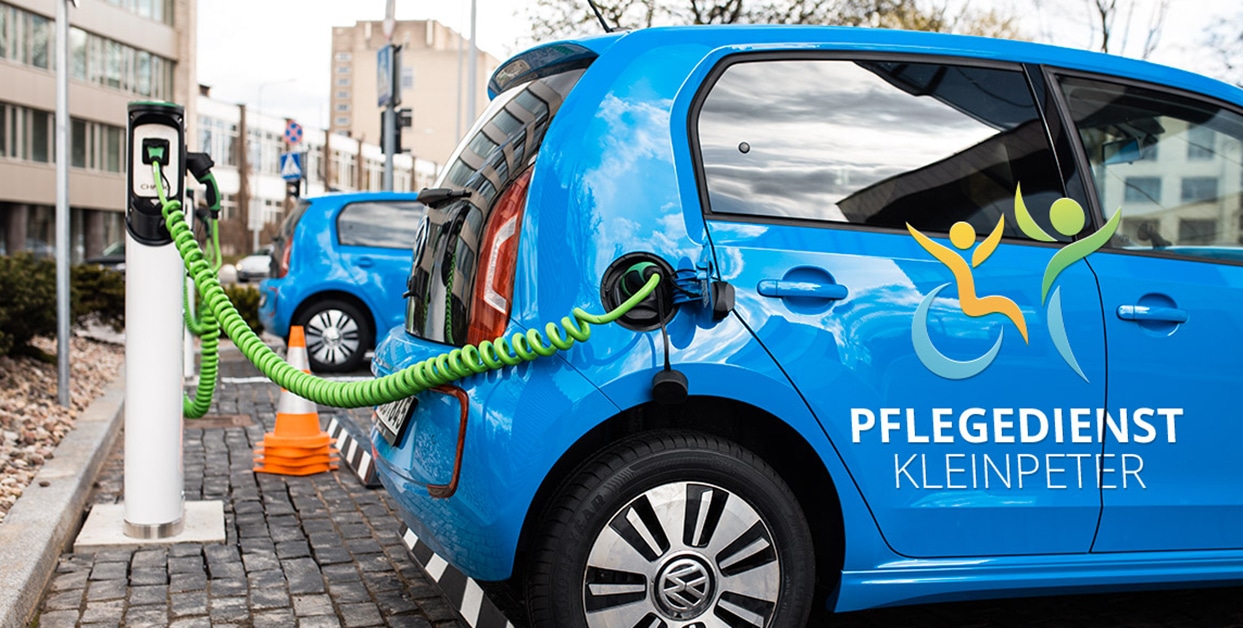Is the switch to electric vehicles worthwhile or should entrepreneurs wait? The answer depends on certain framework conditions and can vary from sector to sector. We show you in a sector comparison which branches of industry have the greatest potential for the use of electric cars.
Those who want to convert their fleet to electric vehicles are not only concerned with the mere replacement of conventionally powered vehicles. Often, a change of mentality in the company is to be achieved at the same time. Image issues and sustainability considerations also play a major role. Therefore, entrepreneurs may be undecided whether a switch to electric vehicles is worthwhile in their industry. We will therefore show you today which framework conditions apply regardless of the sector and which areas are predestined for the use of electric cars.
THESE CONDITIONS MAKE SWITCHING WORTHWHILE
In general, in a sector comparison, use cases can be found in most areas that can be implemented with electric vehicles. Companies that are particularly active regionally have great potential. After all, the question of range is then rather in the background, since mainly short trips are made and the vehicles can usually be charged at night on the company premises. For short business trips, the range of electric cars offers a wide range to meet all requirements in terms of comfort and equipment. In the logistics sector, too, there are already a number of vans available that are ideally suited for transporting goods in the immediate vicinity. Deutsche Post AG has been demonstrating this for some time with the StreetScooter. The subsidiary, StreetScooter GmbH, has adapted the vehicles to the needs of the logistics company and now also offers the commercial vehicles to other companies.
Basically, the following boundary conditions can be defined for which switching is particularly worthwhile:
- The majority of journeys are short journeys
- The vehicles can normally be charged at night on the company premises
- Journeys lead through environmental zones and driving ban areas
In addition to these economic factors, the image gain naturally also plays a major role. Companies that rely on electric vehicles are perceived as modern and forward-looking.
COMPARISON OF INDUSTRIES: WHERE IS THE POTENTIAL FOR CHANGE?
We would now like to present you with examples of some sectors where switching to electric vehicles is preferably worthwhile. We also highlight the special features of the respective areas of application and explain what needs to be taken into account.
CRAFT
In the skilled trades, there is a large number of short trips. In addition, cars or vans are usually used. Last but not least, there are probably already enough parking spaces on the company premises that can easily be retrofitted with a charging pole.
It is recommended to supplement the fleet with conventionally powered vehicles. This can cover supra-regional orders that are processed over long distances and several days, should the charging situation on site be unclear.
FOOD DELIVERY SERVICES
Delivery services that deliver groceries within a city or its surrounding area also have great potential for the use of electric vehicles. The vehicles return to the company location several times a day and complete short distances within a confined space.
Depending on the typical delivery volume, it is also worth looking at smaller vehicles when switching to electric vehicles in this area. Suppliers in urban areas in particular will benefit from this.
OUTPATIENT CARE SERVICES
Care services that care for patients in their own homes are exclusively on the road regionally. In addition, the tours are planned in advance and the vehicles can be optimally scheduled on this basis.
Mixing the fleet with conventionally powered vehicles is worthwhile if, based on past experience, there are frequent unplanned trips. In addition, sufficient charging points should be provided for overnight charging. At the same time, electric vehicles can also serve to attract skilled workers if they are also made available to them for private journeys.
MUNICIPALITY
The administration of a city also offers great potential for electromobility. The distances are generally short. Moreover, journeys do not necessarily have to end at the point of departure, as the vehicles are used between the different parts of the administration and are used by changing people throughout the day.
Charging points with fast-charging capability should be installed at all council car parks to enable uncomplicated charging in between.
THESE STEPS ARE ON THE WAY TO SWITCHING OVER
Regardless of the sector comparison, it is true everywhere that you should take a look at your current vehicle fleet. An analysis of the existing fleet is essential - not only to determine the potential for electric mobility, but also to optimise the vehicle pool in general. It is also the best way to determine whether and how many conventionally powered vehicles are still needed. In the course of this, you should also plan the implementation.
Because switching to electric mobility does not only mean replacing a few vehicles with electric cars, but also requires the participation of the employees, possibly a decision for a booking software as well as adjustments to the organisation of the fleet management. The installation of the charging infrastructure should also be considered and planned at this stage. Last but not least, an economic efficiency calculation is worthwhile in order to be able to plan journeys after the fleet optimisation has been completed and distribute them to the appropriate vehicles. We will be happy to advise you on this complex topic, for example, when examining funding opportunities for your switch to electromobility!
THIS IS HOW TO SWITCH AT 1ST MOULD GMBH
Switching to electric mobility is already proving to be sensible and economical in many sectors. On umschalten.de we have already introduced you to some companies that have successfully taken this step. One of them is 1st Mould GmbH from Pirna. The focus here was primarily on the sustainability aspect. The company wanted to set a good example and show other entrepreneurs how it can be done. Since the "car of departure", as Managing Director Max Stauß describes the company's intention, 8 electric cars have been purchased and now serve the employees for their business trips. Read the full story in our interview with Max Stauß during our on-site visit.
IF THE SWITCH IS NOT YET QUITE READY TO BE MADE
We have already shown you that the switch to electric vehicles can make sense in many industries. But what do you do if your company does not fulfil these conditions, or only just? In this case, it is worth taking a look at variants of cross-company cooperation. For example, location communities in industrial estates are a good option. Sharing a vehicle fleet not only reduces costs, but the partners also minimise the risk of vehicle acquisition.
Conclusion industry comparison: CHANGING PAYS OFF
For some time now, electric vehicles have not only been a good alternative, but in some sectors they are already the better choice. In a comparison of sectors, we were able to identify some areas in which the switch is particularly suitable. With this article, we want to make the decision to switch easier for you. If you have any further questions, we will be happy to help you!



